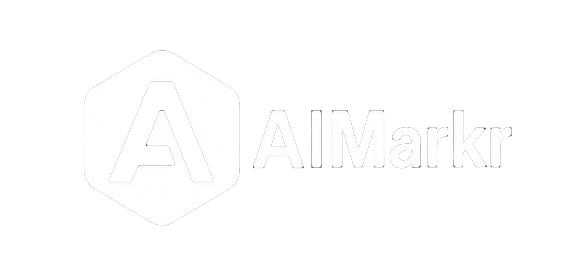
VIABILITY DISCUSSION POINTS

1. Why the Internet never evolved a single, human–asset clearinghouse
Historical inertia. The web’s early design prized openness over provenance. We standardised on URLs—not author IDs—and cached copies everywhere, so the same JPG can appear under thousands of locations without any canonical pointer home.
Copyright is “opt-in, post-hoc.” The legal framework (DMCA, EUCD) lets you assert ownership after misuse, but it never required a proactive registry. Most creators solve the problem with watermarks, EXIF tags, or stock-agency databases—none of which interoperate.
Scale & privacy fears. A truly central catalogue would have to ingest billions of new images per day and store ownership data that often reveals real identities; until recently, there was no off-the-shelf tech stack—or public appetite—to do that without becoming a surveillance honeypot.
Platform silos. Social networks each built their own hashing (Facebook’s PDQ, YouTube’s Content ID) for platform-local enforcement. Those systems work—inside the walled garden—but they don’t talk to one another.
Net result: we have dozens of partial catalogues, none authoritative or universally queryable.
2. Has this been tried before?
No. Although various vendors and initiatives have tackled aspects of digital media authenticity in isolation, no one has attempted to create a performant, global registry like AIMarkr. Existing efforts—such as the Content Authenticity Initiative (CAI) and the Coalition for Content Provenance and Authenticity (C2PA)—focus on embedding metadata and cryptographic signatures into media files to verify provenance. These are valuable standards, but they lack a centralized, universal registry and rely on voluntary adoption rather than offering a comprehensive, real-time solution.
AIMarkr stands out by proactively logging both AI-generated and human-created content at the moment of creation into a single, globally accessible clearinghouse. This dual ingestion model integrates automated submissions from AI systems with voluntary uploads from verified human creators, creating a unified ledger that no prior system has attempted. Unlike industry-specific solutions like copyright registries or decentralized blockchain-based provenance systems, AIMarkr aims for universal coverage across all types of digital media—synthetic and human-authored alike.
In short, while others have addressed pieces of the problem—whether through metadata standards, niche databases, or decentralized ledgers—AIMarkr is the first to combine proactive logging, dual ingestion, and a scalable infrastructure into a unified, global solution. This makes it a groundbreaking approach to restoring trust in digital media.
2. Is AIMarkr a genuinely new layer?
Yes, in two important ways.
Uniform registry that is source-agnostic.
Existing efforts (C2PA, Certificate Transparency, Sigstore or NFT) tackle provenance for specific asset classes—certificates, software binaries, images that keep their metadata. AIMarkr tries to accept any pixel buffer, even after metadata stripping, by relying on perceptual hashes plus optional in-file manifests.Symmetric treatment of human and AI outputs.
Most registries focus on proving human authenticity or, conversely, on flagging only AI. AIMarkr logs both, treating the generator (human identity or model API) as just another key in the ledger. That symmetry is new and critical as the two content streams converge.
3. Does AIMarkr have the right approach?
DESIGN ELEMENTS
Hash + pHash + embedding triple-index:
Covers exact copies and near-dupes; lets stripped images still match.
Creator KYC + device attestation:
Gives courts and newsrooms a firm identity chain; makes revocation meaningful.
Merkle-batched anchoring to a public chain:
Cheap, auditable, tamper-evident—learned from CT/Sigstore.
Hybrid client-side hash / server-side fallback:
Fast for the 95 % of images the browser can read; still covers CORS/DRM cases.
In-file C2PA manifest as a “fast hint”:
Drops lookup to sub-50 ms where tags survive; works offline.
4. What personal data does AIMarkr store about creators?
The primary purpose of the digital asset ledge or clearing house is to simply identify human vs AI origin. To that end, only a hashed creator ID and a public signing key required to be stored in the ledger. Government IDs or biometric checks used during onboarding stay with the KYC provider and are deleted after verification, ensuring AIMarkr never holds raw PII. If other utility comes from attribution to actual identities (photographer, news organization etc.), opt-in contributure profile information may be stored and shared when doing image verifications.
5. Will AIMarkr slow down my browsing experience?
No. AIMarkr is not intending to verify ALL internet images. Rather, its focus is only to verify images where provenance actually matters. IE News, current events, reputationally damaging or evidence impacting. For images in scope (the majority of images your browser can access), the extension computes a hash locally (1–3 ms) and receives a CDN-edge response in roughly the same time it takes to fetch a small CSS file. You’ll see a green check—or a caution icon—before you can scroll past the image.
6. Is AIMarkr too brittle to survive simple crops and resizes done during web publication?
No. Platforms that integrate our SDK create a “derivative receipt” whenever they crop, scale, or rotate a verified image. The tool signs a child manifest—parent ID, transform type, parameters, new hashes—and submits it to the ledger, which links the new fingerprint to the original in a Merkle-DAG. Viewers still get a green check plus a breadcrumb back to the uncropped source. Only whitelisted transforms signed by pinned platform keys are accepted; AIMarkr spot-audits their math and revokes the key (and all its children) if tampering is detected.
7. Can anyone audit AIMarkr’s integrity claims?
Yes. The hourly Merkle-root hashes are posted to a public blockchain, and the proof-generation code is open source. Third-party “watchers” can re-compute tree roots, spot missing entries, or detect log forking without asking AIMarkr’s permission.
8. Will this become a censorship tool?
AIMarkr verifies provenance, not truth or taste. It never blocks uploads or labels content as “good” or “bad.” Journalists, platforms, and readers decide what to do with the provenance signal. Anonymous whistle-blowers can still register assets via hardware attestation without revealing legal identity.
9. What about other content types (video, audio etc)
While the initial focus of AIMarkr is on images as the most prevalent medium for AI-generated deepfakes, the architecture is inherently extensible to other modalities, including video and audio. This expansion addresses the growing threat of multi-modal deepfakes, such as manipulated videos with synchronized fake audio, which have been implicated in high-profile disinformation campaigns. By applying the same clearinghouse model—registration of cryptographic fingerprints at creation time—AIMarkr can provide a unified provenance layer across media types, enabling consumers to query for authenticity scores regardless of format.
Expanding to multi-modalities amplifies AIMarkr's impact on trust erosion. For example, early registration could reduce video deepfake virality by an estimated 50%, as platforms down-rank unverified content during high-stakes events like elections. Audio verification would deter voice cloning scams, providing legal defensibility for creators (e.g., podcasters registering episodes for safe harbor protections). Overall, a unified system fosters ecosystem-wide adoption, where consumers demand "AIMarkr-verified" across media, creating network effects that incentivize participation from video platforms (e.g., YouTube) and audio services (e.g., Spotify).
10. Conclusion
AIMarkr isn’t reinventing hashing or ledgers, but it is unique in unifying human and AI provenance under one global, query-by-fingerprint roof. The architecture borrows from systems that already scale in parallel domains, suggesting it’s technically plausible.
